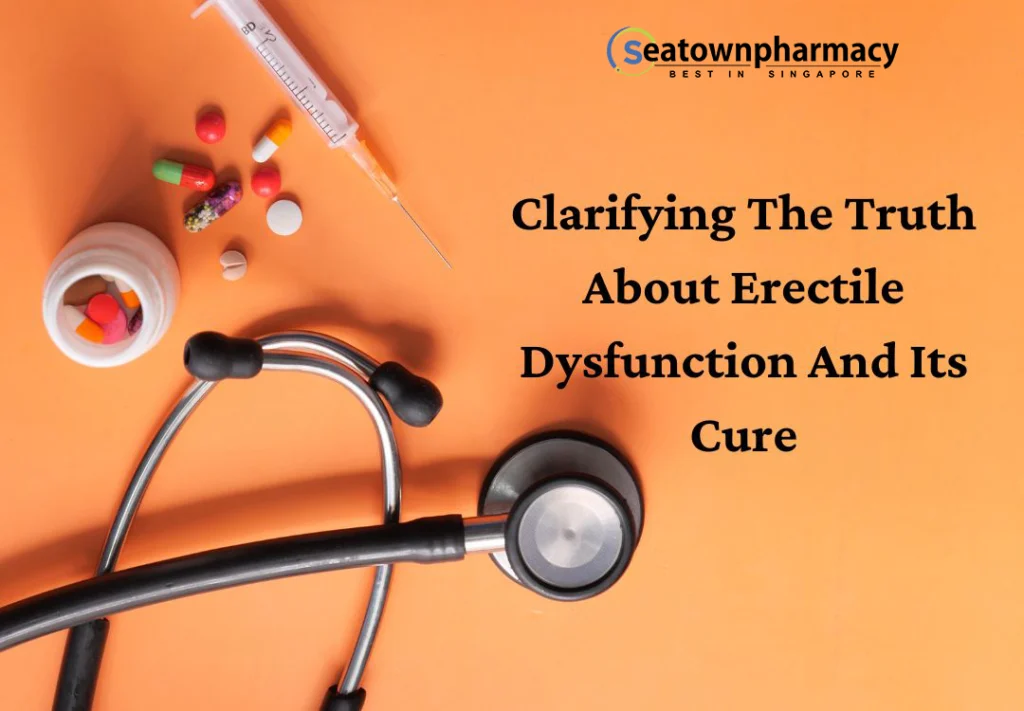Erectile Dysfunction is a fast-emerging medical problem, acquiring the status of a silent global pandemic. Defined as failure to achieve or sustain an erection even after sexual stimulation, erectile dysfunction affects 15% of men yearly. Estimates on just how common ED varies widely. One 2018 review estimated that ED affects about a third of men. In comparison, a 2019 review has claimed that the global prevalence of ED ranges between 3-76.5%.
The Massachusetts Male Aging study, regarded as a trusted source of ED statistics, has further stated that around 52% of men experience some form of erectile issue that increases from 5-15% between the ages of 40 and 70. Keeping in mind the growing incidence, researchers have concluded that ED constitutes a significant burden on society given its high prevalence and impact on quality of life and is also a risk factor for cardiovascular disease, dementia, and all-cause mortality.
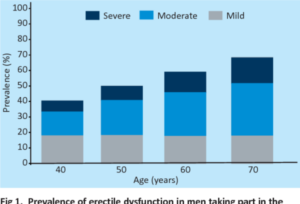
Medications are often regarded as the best treatment options for Erectile Dysfunction mainly because of the surety of results and the fast-acting nature of ED pills. Combined with lifestyle changes and counseling, they can improve the quality of life with individual parameters of morbidity and mortality rate. The availability of phosphodiesterase type 5 inhibitors (PDE5i) has resulted in increasing numbers of patients seeking medical help for erectile function problems but has also dramatically affected the medical management of ED. More physicians are treating ED, especially in the primary care setting, including minimal patient work-up and prescription of PDE5 inhibitors due to their proven efficacy and safety profile.
Among the numerous PDE-5 inhibitors, Sildenafil was the first available PDE5i that revolutionized ED treatment since its inception in 1996. Clinical data have shown that more than 30 million men are treated worldwide with Sildenafil successfully. More than 2600 papers have been published in Medline regarding its safety and efficiency.
In a clinical study conducted to evaluate the long-term safety and efficiency of Sildenafil, 979 men participated for four years, out of which 932 (95%) were analyzed for efficacy. After each year, at least 94% of the annually decreasing number of participants reported satisfaction with the effect of sildenafil treatment on their erections, with only a 3.3 percentage point variation across the 4 yearly assessments of discontinued Sildenafil because of insufficient clinical response. Most participants reported an improved ability to engage in sexual activity.
A more recent retrospective analysis, in which data were pooled from 35 Pfizer-sponsored double-blind trials involving 4819 patients who received Sildenafil and 3296 patients who received a placebo, supported the conclusions of the earlier pooled data and found that Sildenafil is well tolerated among patients taking antihypertensive medications, including those on multidrug regimens: an important factor as patients on antihypertensives have a low tolerance to ED pills and use of the drug and dangerously increase their blood pressure levels.
Furthermore, new data have suggested that in addition to working on Sexual Disorders, Sildenafil has beneficial effects in several chronic conditions like idiopathic pulmonary hypertension. Numerous articles have indicated that PDE5i may improve endothelial function. In contrast, others have postulated its benefits for premature ejaculation and purported its efficiency as a dual-action medication.
But it is not the only medication for use in conditions of ED. in addition to, Sildenafil, Vardenafil, Tadalafil, and Avanafil are other PDE-5 inhibitors that work by relaxing smooth muscles and increasing blood flow in the penis.
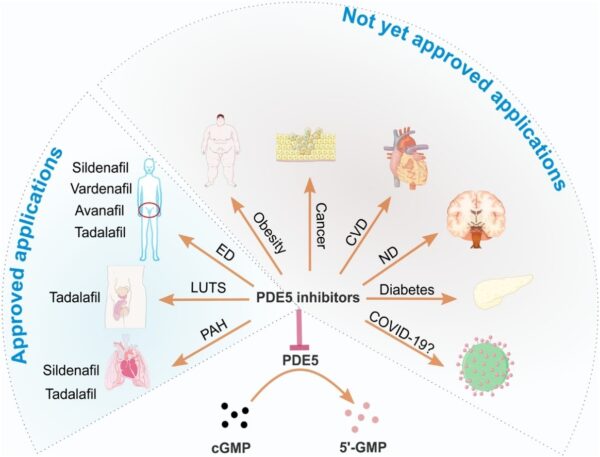
Sildenafil, Tadalafil, Vardenafil, and Avanafil are FDA-approved PDE-5 inhibitors and are considered second-generation treatment options for ED. These inhibitors differ in their selectivity, potency, indication, onset and duration of action, cost, administration considerations, precautions, and adverse effects profiles. Other clinically available non-FDA approved PDE5 inhibitors include Lodenafil, Udenafil, and Mirodenafil; that in addition to inhibiting the PDE5 enzyme, can selectively inhibit other enzymes, including acetylcholine esterase ( cognitive enhancing properties), histone deacetylase ( anticancer property ), cyclooxygenase ( tumor cells inhibition)
Other than PDE-5 inhibitors, injectable ED pills or creams are some other treatment options; individuals who are reluctant to take systemic treatments or have AEs, especially in patients who do not respond, cannot tolerate, or do not accept PDE5 inhibitor therapy,
Alprostadil is one such drug that is marketed as a urethral stick, intracavernous injection, and recently as a topical cream for conditions of ED. Alprostadil is a synthetic analog of prostaglandin E1 (PGE1) that binds to G protein-coupled PGE1 receptors localized on the surface of smooth muscle cells to activate cAMP (cyclic adenosine monophosphate). This results in smooth muscle relaxation and, subsequently, effective penile erection without any significant adverse effects to mar its efficiency.
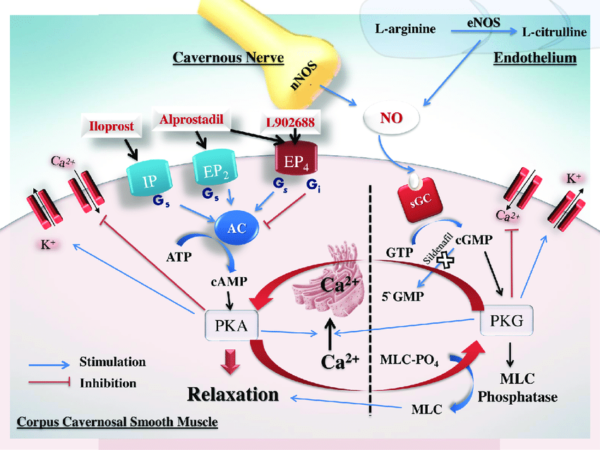
In contrast to PDE5 inhibitors, which require an erectogenic stimulus to activate the nitric oxide/guanylate cyclase pathway, Alprostadil acts independently on the entire process’s psychological and neurological components and simplifies the process erection process considerably. It has a favorable pharmacodynamic profile and is poorly absorbed in systemic circulation, making it a suitable treatment with a reduced risk of adverse effects.
Clinical trials using Alprostadil have reported a favorable clinical profile, with systemic adverse effects reported in only 3% of the treated population. Clinical efficacy has been demonstrated in phase II and III trials, showing a global efficacy of up to 83% with the 300 μg dose in patients with severe ED, significantly better than the placebo administered alongside it. Its fast onset of action and lack of interactions with other drugs has made alprostadil cream a possible first-line therapeutic option for some patients with ED:
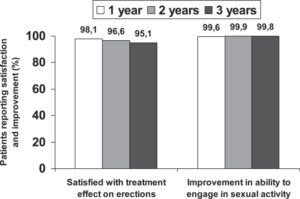
Vitaros- brand name of Alprostadil
Key-points
● Sildenafil is the most popular erectile dysfunction pill, but its effectiveness is equivalent to other PDE5 remedies.
● Sildenafil and Tadalafil can increase intraocular pressure and cause non-arterial ischemic optic neuropathy and must be used cautiously.
● Sudden hearing loss has also been reported with Tadalafil use.
● Vardenafil and Tadalafil appear well tolerated and safe in patients receiving most concomitant antihypertensive agents except α-blockers, but caution is required. Vardenafil is contraindicated in patients taking α-blockers as severe hypotension may be precipitated.
● Food intake, especially fatty food, affects the pharmacokinetic profiles of Sildenafil and vardenafil but not that of Tadalafil.
● Avanafil has a rapid onset of action because of its rapid absorption, which allows it to reach a maximum circulating concentration in about 30 to 45 minutes, making it possible to engage in sexual activity within 15 minutes.
● PDE5 inhibitors are effective in men with ED due to a variety of causes, including spinal cord injury and radical prostatectomy, and patients with diabetes mellitus or previous prostate surgery respond less well than patients with psychogenic or vasculogenic ED
● Despite Alprostadil’s effectiveness, there is limited information about its long-term safety.
● Antioxidants added to PDE5 inhibitors were associated with improved ED without increasing the adverse effects.
● Further studies are required to evaluate the potential of ED pills and come to a concrete conclusion regarding their safety and efficacy.
https://www.ncbi.nlm.nih.gov/pmc/articles/PMC2699643/
https://www.niddk.nih.gov/health-information/urologic-diseases/erectile-dysfunction/treatment
https://www.ncbi.nlm.nih.gov/pmc/articles/PMC2387281/
https://www.ncbi.nlm.nih.gov/pmc/articles/PMC5131739/
https://www.sciencedirect.com/topics/medicine-and-dentistry/tadalafil
https://www.sciencedirect.com/topics/medicine-and-dentistry/avanafil
